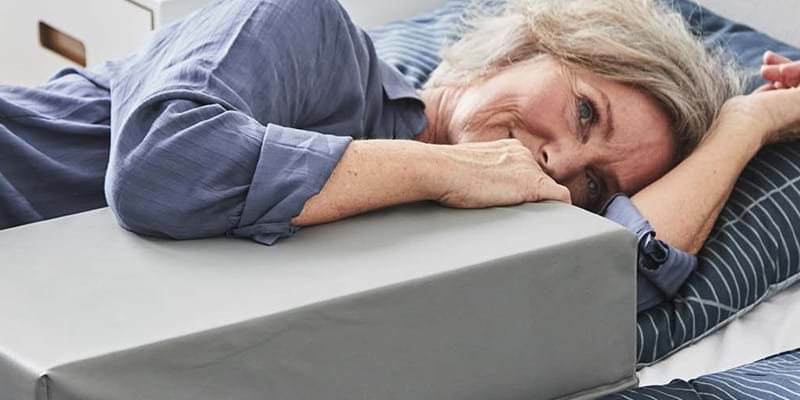
What is good Positioning?
Good positioning is important for both the client and the quality of care. Unfortunately, many caregivers are uncertain how to create a good positioning for the client.
16. May 2019
By: Physiotherapist, Peter Maindal
There is no definite answer to the question of What is good positioning? Whether the positioning is good, depends on the individual situation and need. So, the question becomes what do you want to achieve with the positioning?
This is because positioning can be used for many different purposes such as pressure or pain relief, to provide safety and comfort, and for examination or personal hygiene procedures.
The Purpose of Positioning
- Create comfort or boundaries
- Relieve of certain body parts or a more general support of the body
- Pain relief
- Improving respiration
- For hygiene procedures or examinations
- Relieving deformities
- Relieving edema and circulatory problems
A great variation of cushion types and techniques can be used for positioning, but one thing applies to all situations: The position must be stable and should be able to uphold itself!
Create Stability
A fundamental premise for the client feeling safe and comfortable is that they feel stability in the way they are lying. If it feels like the positioning cushions are sliding away, the client will typically tens up in the efforts to maintain their position.
Try standing on one leg with your eyes closed on a soft surface. Most people will feel that they, in their efforts to keep standing, are tensing up and feel uncomfortable. The moment they have both feet on the ground again, the body will relax.
If you then sit on a chair with both arms on the armrests the total support surface beneath you is increased, and you feel even more comfortable and relaxed. You might even be able to fall asleep.
The same conditions apply when lying down.
Try lying on the floor with your arms along your side. This most likely feels rather comfortable. Then turn to your side with your legs stretched and attempt to continue holding your arms at your side. Most will experience this as unstable, insecure and not very comfortable, as you are lying directly on your shoulder and hips.
As such, the basis for good positioning is creating stability first. Stability is ensured by creating a support surface as large as possible. This is achieved by the way the client is positioned and by using appropriate positioning cushions that stay in place.
A stable positioning creates the basis for the client to feel safe and relax. When the client is feeling relaxed, their tone and arousal is reduced, which creates the basis for better rest and sleep, and subsequently better healing.
Keep it Simple
Unfortunately, positioning is often considered to be rather difficult as the possibilities are endless. Therefore, positioning is not always considered a part of everyday care.
But if you focus on creating stability first, you will, in the majority of cases, be able to create a good, safe and successful position for the client.
And if you are using suitable positioning cushions, that don’t scoot around on the sheet and that maintain their shape, positioning becomes easier and you can make a great difference for your clients.
Positioning clients does not need to be very advanced. Focus on stability and you will get far.
Four tips for positioning:
- Define the purpose of positioning before you begin
- Create stability first
- Use suitable positioning cushions, that don’t move around
- Avoid using too many pillows and duvets, so that the client doesn’t get too hot
